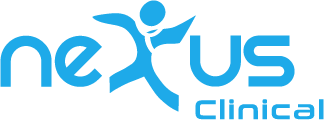
How to Improve Your Practice’s Medical Billing Workflow?
- Written by Kiran Agate
How to Improve Your Practice’s Medical Billing Workflow?
- Written by Kiran Agate

In the dynamic environment of ambulatory healthcare, establishing a seamless and error-free medical billing workflow is paramount.
Effective medical billing practices not only ensure prompt reimbursements but also mitigate claim denials and elevate patient satisfaction levels. One game-changer in this area is medical billing with integrated EHR software.
Nexus EHR and Practice Management system can dramatically streamline your billing process, thereby bolstering your practice’s financial health. It helps reduce the staff hours by streamlining practice operations and increases bottom line with efficient billing workflow
This comprehensive guide will provide insights into optimizing your revenue cycle procedure utilizing EHR software.
The Crucial Role of Efficient Medical Billing
Before exploring the solutions, it’s crucial to comprehend the significance of an efficient revenue cycle for your practice. Medical billing directly influences your revenue cycle management.
Any delay or mistake in billing can lead to deferred payments, impacting your cash flow.
Moreover, an efficient revenue cycle process can enhance patient satisfaction by offering precise, understandable invoices and reducing waiting periods for insurance claim settlements.
Harnessing EHR Software for Optimizing Medical Billing
EHR software can be a significant catalyst in enhancing your medical billing workflow. Here’s how:
Consolidation of Patient Information
One of the main advantages of EHR software is the consolidation of patient data. Having all necessary information in a single place minimizes the risk of errors during the billing process.
It also accelerates the process as staff can quickly retrieve the required information when needed.
Automation of Billing Tasks
EHR software equipped with billing software can automate various tasks in the medical billing process, such as code assignment, claim submission, payment posting, and follow-ups on unpaid claims.
Automation reduces manual labor, freeing up staff time for other responsibilities, and minimizing the risk of human errors.
Real-time Claim Verification
EHR software often includes real-time claim verification features, which scrutinize claims for errors before submission.
This feature can significantly reduce claim denials and rejections, ensuring quicker reimbursements.
While these features are impressive, EHR software offers even more functionalities that can streamline your medical billing workflow.
Seamless Integration with Practice Management Systems
Many EHR systems can seamlessly integrate with practice management systems. This integration allows for a smoother transition of patient data from the clinical to the billing side of your practice, reducing errors and speeding up the overall billing process.
Enhanced Reporting Capabilities
EHR software often comes with enhanced reporting capabilities. These reports can provide valuable insights into your billing performance, helping you identify areas for improvement.
Importance of Staff Training
While integrating Practice Management and EHR software can significantly streamline your medical billing process, it’s equally important to ensure your staff can effectively use this software.
Provide regular training sessions and refresher courses to keep your staff abreast of the software’s latest features and functionalities.
Patient Engagement and Medical Billing
EHR software can also help improve patient engagement, which indirectly impacts your medical billing process.
Features like patient portals allow patients to access their medical records, book appointments, request prescription refills, and communicate with healthcare providers.
This active participation can lead to better adherence to treatment plans, resulting in fewer missed appointments and late payments.
Final Thoughts
Improving your medical billing workflow can have a profound impact on your practice’s revenue and patient satisfaction levels. By harnessing the power of EHR software, you can streamline and automate your revenue cycle process, reducing errors, and securing timely reimbursements.
Investing in the right EHR and Practice Management software, coupled with adequate staff training, can set your medical practice on the path to success.
Remember, the goal is not just to adopt technology but to optimize its use for improved efficiency and productivity.
With the right approach, you can transform your revenue cycle workflow, making it a robust pillar supporting the success of your ambulatory practice.





